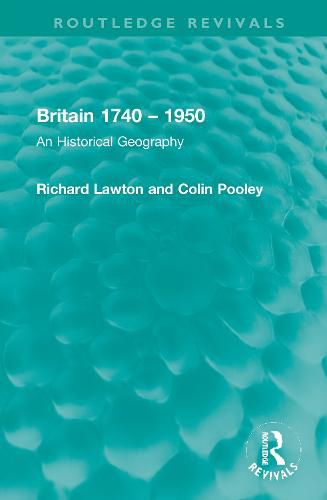Readings Newsletter
Become a Readings Member to make your shopping experience even easier.
Sign in or sign up for free!
You’re not far away from qualifying for FREE standard shipping within Australia
You’ve qualified for FREE standard shipping within Australia
The cart is loading…






Originally published in 1992, this book provides students with a well-illustrated, clearly written text which offers a coherent overview of Britain’s development from a pre-modern to a modern economy and society. The key processes that have shaped the geography of modern Britain are rooted in the significant demographic, economic, technological and social transitions of the early eighteenth century, the impact of which was not fully diffused through the nation until the mid-20th Century. This country-wide survey examines the nature of this transformation. The material in the book is accessible because the book is clearly structured into 3 phases: 1740 to the 1830s; the 1830s to the 1890s and the 1890s to 1950. For each period, the principal aspects of change in population, industry, the countryside and urban life are examined, and regional examples given to support the analysis.
$9.00 standard shipping within Australia
FREE standard shipping within Australia for orders over $100.00
Express & International shipping calculated at checkout
Originally published in 1992, this book provides students with a well-illustrated, clearly written text which offers a coherent overview of Britain’s development from a pre-modern to a modern economy and society. The key processes that have shaped the geography of modern Britain are rooted in the significant demographic, economic, technological and social transitions of the early eighteenth century, the impact of which was not fully diffused through the nation until the mid-20th Century. This country-wide survey examines the nature of this transformation. The material in the book is accessible because the book is clearly structured into 3 phases: 1740 to the 1830s; the 1830s to the 1890s and the 1890s to 1950. For each period, the principal aspects of change in population, industry, the countryside and urban life are examined, and regional examples given to support the analysis.